
Deep Submergence Vessel NR-1 was a unique United States Navy (USN) nuclear-powered ocean engineering and research submarine, built by the Electric Boat Division of General Dynamics at Groton, Connecticut. NR-1 was launched on 25 January 1969, completed initial sea trials 19 August 1969, and was home-ported at Naval Submarine Base New London. NR-1 was the smallest nuclear submarine ever put into operation. The vessel was casually known as "Nerwin" and was never officially named or commissioned. The U.S. Navy is allocated a specific number of warships by the U.S. Congress, but Admiral Hyman Rickover avoided using one of those allocations for the construction of NR-1 in order to circumvent the oversight that a warship receives from various bureaus.

A submarine is a watercraft capable of independent operation underwater. The term “submarine” is also sometimes used historically or informally to refer to remotely operated vehicles and robots, or to medium-sized or smaller vessels. Submarines are referred to as boats rather than ships regardless of their size.

The Amphion class of British diesel-electric submarines were designed for use in the Pacific War. Only two were completed before the end of hostilities, but following modernisation in the 1950s, they continued to serve in the Royal Navy into the 1970s.

USS S-5 (SS-110) was a "Government-type" S-class submarine of the United States Navy. Her keel was laid down on 4 December 1917 by the Portsmouth Navy Yard of Kittery, Maine. She was launched on 10 November 1919, sponsored by Mrs. Glenn S. Burrell, and commissioned on 6 March 1920 with Lieutenant Commander Charles M. "Savvy" Cooke, Jr., in command. She sank accidentally during full-power trials on 1 September 1920, but due to actions by her crew and the crews of other ships, there were no deaths. Refloated, she was lost when she sank again while under tow on 3 September 1920.

HMS A1 was the Royal Navy's first British-designed submarine, and their first to suffer fatal casualties.
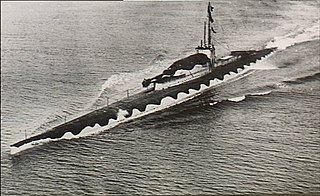
The British Royal Navy M-class submarines were a small class of diesel-electric submarines built during World War I. The unique feature of the class design was a 12-inch (305 mm) gun mounted in a casemate forward of the conning tower.

HMS A7 was an A-class submarine built for the Royal Navy in the first decade of the 20th century. She sank in a training accident in 1914 with the loss of her entire crew. Efforts to salvage her failed and her wreck is a protected site. Diving on her is prohibited without a licence from the Ministry of Defence.

HMS Sidon was a submarine of the Royal Navy, launched in September 1944, one of the third group of S class built by Cammell Laird & Co Limited, Birkenhead, named after the naval bombardment of Sidon in 1840. An explosion caused by a faulty torpedo sank her in Portland Harbour with the loss of 13 lives.

HMS M1 was a submarine of the British Royal Navy, one of four vessels of her class ordered towards the end of the First World War. She sank with the loss of her entire crew in 1925.
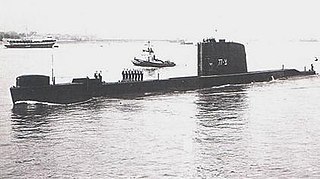
INS Dakar was a diesel–electric submarine in the Israeli Navy. The vessel, a modified World War II British T-class submarine, had previously been HMS Totem of the Royal Navy. She was purchased by Israel from the Government of the United Kingdom in 1965 as part of a three T-class submarine deal.

HMS Alliance(P417/S67) is a Royal Navy A-class, Amphion-class or Acheron-class submarine, laid down towards the end of the Second World War and completed in 1947. The submarine is the only surviving example of the class, having been a memorial and museum ship since 1981.
HMS Ambush (P418/S68/S18), was an Amphion-class submarine of the Royal Navy, built by Vickers Armstrong and launched 24 September 1945.

HMS Reclaim was a deep diving and submarine rescue vessel of the British Royal Navy. She was originally intended to be the King Salvor-class ocean salvage vesselSalverdant and was fitted with specialised equipment including underwater television cameras and sonar and echosounding apparatus. She was also equipped for submarine rescue work.

HMS Totem was a Group 3 T-class submarine of the Royal Navy which entered service in the last few months of World War II. To-date, she is the only ship of the Royal Navy to have been named Totem.
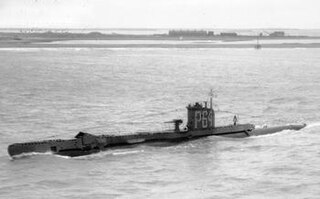
HMS Vandal (P64) was a Royal Navy U-class submarine built by Vickers-Armstrong at Barrow-in-Furness, yard number 838. The submarine had the shortest career of any Royal Navy submarine, being lost with all 37 onboard just four days after commissioning.
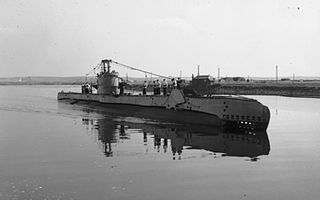
HMS Sirdar was an S-class submarine built for the Royal Navy during the Second World War, and part of the Third Group built of that class. She was built by Scotts, of Greenock and launched on 26 March 1943.
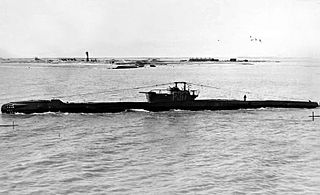
HMS Tally-Ho was a British submarine of the third group of the T class. She was built as P317 by Vickers Armstrong, Barrow and launched on 23 December 1942. She has been the only ship of the Royal Navy to bear the name, that of the hunting call, "Tally-Ho!".

HMS Tabard was a British submarine of the third group of the T class. She was built by Scotts, Greenock, and launched on 21 November 1945. So far she has been the only boat of the Royal Navy to bear the name Tabard, after the item of clothing. Having been launched after the war, she was selected, along with a number of boats of her class, to try out new streamlining techniques based on the German Type XXIII submarine. In May 1963, she was involved in a collision with HMAS Queenborough, and on 10 February 1964 she underwent exercises with HMAS Melbourne and HMAS Voyager in the hours before their collision. When she returned to the UK, she became the static training submarine at the shore establishment HMS Dolphin, until 1974 when she was sold and broken up.

I-201 was the name ship of her class of high-speed submarines built for the Imperial Japanese Navy during World War II. She was commissioned in February 1945, and the war ended before she could carry out an operational patrol. She surrendered to the United States Navy in 1945 and was sunk as a target in 1946.




















